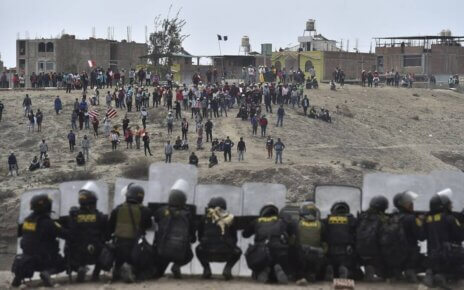It was the video seen around the world: a police officer with his knee on a man’s neck, who uttered the words, “I can’t breathe.” That man was George Floyd, and the officer, Derek Chauvin, is now on trial for second-degree murder, third degree-murder, and manslaughter. The other four officers that were surrounding him during the incident were all fired and charged with murder, according to The Washington Post.
As of Friday, the trial was reported to be ahead of schedule, and Friday was filled with testimonies of several police officers who spoke against Chauvin.
After May 25, 2020, protests began across the US in outrage against police brutality towards African Americans. America has seen this level of protesting and activism before, most notably during the Civil Rights Movement in the 1960s. But at its basic level, how big of a role does activism and protesting play in producing actual political and lawful change, like in this trial of Mr. Chauvin?
Michelle Parisi, Adjust Professor of Political Science, said, “[Protests are] crucial in fostering systemic change in democratic societies. When we discuss successful social movements in the US, the underlying themes of each movement reside in the people’s ability to engage in activism and protest that can uproot systemic injustices that plague our society.”
Matthew Filosa, a political science student, added “The protests we saw this summer were part of the largest social movement in American history. If people did not speak out and protest, then the murder of George Floyd would have been swept under the rug along with the larger picture of inequality against African Americans. Activism and protest are powerful tools to bring about change. The Civil Rights Movement of the 50’s and 60’s was successful due to these methods. One can say the same with the American Revolution.”
Donna Dolphin, Associate Professor of Communication, discussed media and how it can impact how we view certain events. She explained, “For example, repeatedly presenting the same information about peaceful demonstrations turning violent creates a sense of widespread danger. We get saturated with that information and it feels like it’s more intense than it actually is. The line between imparting vital information and creating a sense of hysteria is one that responsible journalists must constantly consider.”
Parisi added, “Media organizations have their own agendas and stakeholders when covering the news. Sadly, this has contributed to a massive spike in misinformation and overwhelming spread of conspiracy theories throughout our society. During the protests, media coverage was biased (depending on what news station you were watching) and created a different situation than what was happening on the ground.”
The New York Times reported that many witnesses felt a sense of guilt and grief after witnessing this alleged crime firsthand. They reported feeling a sense of something going horribly wrong when the incident was happening. Some have stated that they currently are coping with trauma themselves now because they could not do anything to stop it.
One witness was Lt. Richard Zimmerman, who stated that Chauvin placing his knee on Floyd’s neck was against police policy. Another was Sgt. Jon Edwards, who explained that he followed protocol that night by surveying the convenience store where Floyd had been and directed other officers to turn their body cameras on while doing so.
The New York Times also reported that Sgt. Jody Stiger of the Los Angeles Police Department said that the force that Chauvin used on Floyd was excessive.
The Times also reported that Lt. Johnny Mercil said that Chauvin’s actions towards Floyd were not consistent with how officers have been trained to restrain people when they are resisting being arrested by them.
The trial resumed on Monday, April 5, and more testimonies will be heard throughout the week.
IMAGE TAKEN from ABC News



